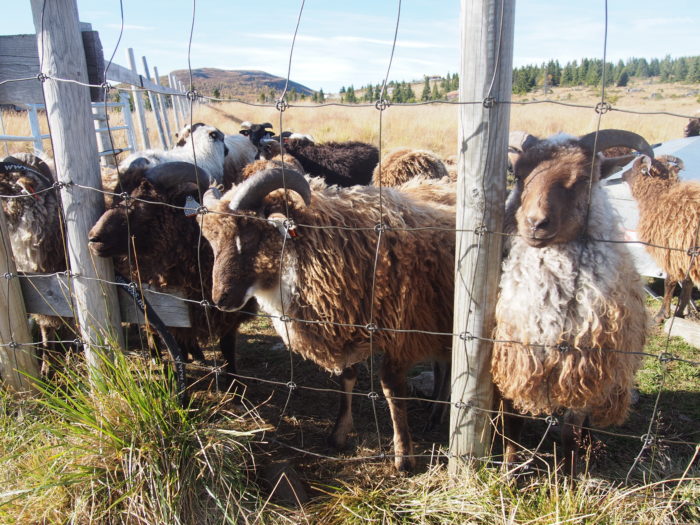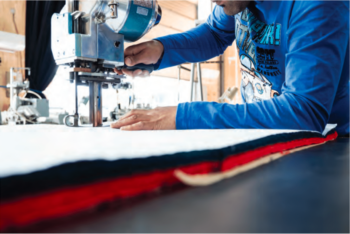VikingGold

The Vikings’ textiles were technically superior, beautiful and functional. They decorated residences, ships and people, and kept them warm and dry. The tightly woven sails in wool brought them across the seas and enabled cultural exchange and trade; also of textiles. In graves like the Oseberg, textiles hold a central place and are found in a plethora of techniques and functions. In spite of this, there is little research on the Vikings’ textiles and hardly any available literature, exhibits or other dissemination. The dominant rendition of Vikings as trolls, with horn-decorated helmets dominate the tourist market and is probably as far from the original as the local renditions of the textiles as felted, bulky and unaesthetic sack-like clothing.
Wool was the dominant fiber for the Vikings, and we are lucky that the old indigenous breeds with similar wool have been saved from extinction and thereby can ensure innovation. These breeds have soft, fine bottom wool and long, strong cover fibers. Today the two are spun together, but the Vikings separated the fibers, and spun and wove both the softest apparel from the bottom wool and strong, decorative textiles from the cover fibers – which have an exceptional sheen. In spite of the fact that we still have this unique wool resource, the economy and quality is declining.
The goal of the project is to develop high quality design projects based on inspiration from the Viking textiles. Through this we aim to simultaneously increase the attention and pride for our older textile history, show-casing the possibilities inherent in cooperation between archeological research and modern design. We will activate the local Nordic value-chain for wool, reverse the negative trend for wool from older breeds and reconquer «Viking» as a valuable treasure within textiles. We will achieve this goal by developing select examples that high-light how knowledge-transfer on Viking-textiles can result in beautiful products.
To achieve this, we need to relink different stake-holders and ensure a common technical, esthetical and marketing strategy. The project has several cooperating partners from collection and classification of wool, spinners and weavers, and finally Nordic design companies. Wool is a local resource which should to a greater extent represents a source of local value creation and thereby become an alternative to the global mass production of textiles. The success of «local» and «slow» signals a change in attitude towards developing products that builds on local traditions and history – both for local customers and tourists. The Nordic region is already known for good wool products – and for Vikings. Linking this together with local production and designers will give us a new take on cultural heritage.
To see more from this project, join the VikingGold Group on Facebook.


